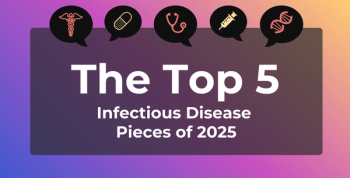
Roger M. Lyons, MD, Discusses 10-Year Review of MDS Patient Data From the Community Oncology Setting

Evidence-Based Oncology™️ spoke with Lyons about the creation of this real-world data set and the pros and cons of different treatments for MDS.
One decade ago, Roger M. Lyons, MD, FACP, a board-certified hematologist at Texas Oncology in San Antonio, literally wrote the book on treatment guidelines in
At the
Evidence-Based Oncology™️ (EBO) spoke with Lyons about the creation of this real-world data set and the pros and cons of different treatments for MDS. This interview is edited lightly for clarity.
EBO: Can you discuss the mission of your study on real-world treatment patterns in MDS?
LYONS: This is a 10-year study of patients in The US Oncology Network. So this [is] real, live data. Most of the studies that you see are coming out of academic medical centers, and frankly, the patient distribution is somewhat different.2 Not everybody can get into these academic centers, not everybody can afford to go to them, and the patient mix is different. So this is real-world data [from] where the majority of people with MDS are treated in the United States, probably most Western European countries, and perhaps Japan as well. We have this information; we wanted to see what it looked like and whether there was a correlation or similarity to what we knew about other published data and to keep a baseline of information for people to use when they’re looking at their own data—to say, "Does this correspond to what has been seen over a 10-year period in a community-based oncology practice?"
It’s not state of the art because it’s over a 10-year period; we are not looking at cohorts at different time frames trying to see [whether] things are different. There’s only a little difference at the end where venetoclax was added in, and there are not enough patients there to make a difference. There’s not anything else that’s changed dramatically over time. So, I don’t think we can talk about change over time. It’s primarily looking at a large group of patients treated by 1400 [physicians] over 10 years. We’re trying to put together what is going on in the world of patients with MDS.
EBO: Most of your patients at high risk were treated with azacitidine. Approximately 10% received decitabine. Was there any pattern to these treatment differences, or were these practice preferences?
LYONS: There are 3 hypomethylating agents available. There’s oral decitabine as well. So there’s azacitidine, which was the first on the market. Most people have a lot of experience with it. It’s easy to give; you can give it subcutaneously or [via] IV [intravenous] [administration]. The subcutaneous [method] is easy for the patient. They don’t need an IV started; if they don’t have a line, they’re in and out, and the cost is fairly reasonable for a chemotherapy drug; the toxicity levels are quite low. People are very comfortable with that agent. We helped develop the treatment schedules 10 or 15 years ago1 ....A downside compared with decitabine is that [azacitidine] is given over 7 days. You can skip the weekends [and] give for 5 days, and it’s probably as effective, but most [physicians] aren’t comfortable doing that for patients [at] higher risk.
Although the data didn’t show much difference, decitabine has a little more toxicity; the side blood count [levels] go down a little more in my experience. The price is much the same, but [decitabine] has to be given [via] IV [administration]. And that doesn’t have a distinct advantage other than the 5-day schedule, but it can’t be given subcutaneously.
The oral agent, which is decitabine in a mixture of something that allows it to be absorbed, is expensive. It’s a pill given 5 days in a row, but it’s much more expensive than the other drugs. There are a few patients [who] you want to give it [to] if they can’t get back to you—if they live at a distance or don’t have transportation. But insurance companies are not happy with that choice.
References
1. Lyons RM. Myelodysplastic syndromes: therapy and outlook. Am J Med. 2012;125(suppl 7):S18-S23. doi:10.1016/j.amjmed.2012.04.018
2. Lyons RM, Cheng WH, Moore-Schiltz L, et al. Treatment patterns and overall survival (OS) among patients with myelodysplastic syndromes (MDS) treated in the US community oncology setting: a real-world retrospective observational study. Abstract presented at: 64th American Society of Hematology Annual Meeting & Exposition; December 10-13, 2022; New Orleans, LA. Abstract 3085.
Newsletter
Stay ahead of policy, cost, and value—subscribe to AJMC for expert insights at the intersection of clinical care and health economics.








































